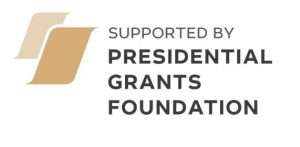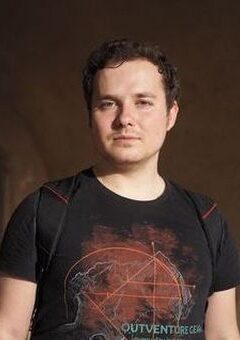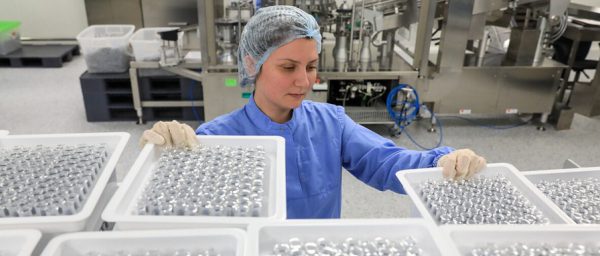 Mass vaccination has begun, but most regions of the Ural Federal District ran out of the coronavirus vaccine. Interfax reports that those who wish to be vaccinated get registered in the vaccination queue while waiting for new supplies. The coronavirus vaccine is not available to ordinary Russian citizens.
Mass vaccination has begun, but most regions of the Ural Federal District ran out of the coronavirus vaccine. Interfax reports that those who wish to be vaccinated get registered in the vaccination queue while waiting for new supplies. The coronavirus vaccine is not available to ordinary Russian citizens.
The “Petersburg Politics” fund has come to these conclusions after studying the state of mass vaccination at the beginning of January 2021. Alexander Dragan, a marketing expert, has reached the same conclusions. He calculated the number of vaccinated people in the regions based on the data from open sources.
“One region receives 10 thousand doses, while another receives only 5 thousand doses”
Alexander Dragan, a marketing expert and independent analyst, calculated how many people got vaccinated in different regions of Russia based on open data: reports of regional Ministries of Health and emergency operation centers, local media.

Alexander Dragan
— There is no large-scale vaccination in the vast majority of Russian regions. And how the mass vaccination will be organized (its launch was announced on January 18) is a big question for me. We have figures for 75 regions, where 92% of the population live and only 364 thousand people got vaccinated there. This is only 0.27% of the population. If we exclude Moscow from the list of these regions, the percentage of vaccinated people is even lower: only 0.14%, – Alexander Dragan told Pravmir.
Why is vaccination stalling in some regions and, on the contrary, is in full swing in other regions? Dragan first believed that it depended on how far they are from the federal center.
The vaccine production is concentrated around Moscow. Even if it is produced in another city: for example, as the “Biocad” plant operates in St. Petersburg, the vaccine will still be brought to the capital for quality control and registration with Federal Service for Surveillance in Healthcare (Roszdravnadzor).
— I had an assumption that the further the regions are from the center, the less they are provided with vaccines. But the vaccine is not more available in the Central Federal District, and less available in the Far East. That is, vaccination is equally difficult to receive in all federal districts. At the same time, there are regions that are well provided with the vaccine both in the center and in the outskirts of the country, – explains Dragan.
According to the report, everyone can get vaccinated in the Sakhalin region since December 2020. “According to my data, this region is in the TOP-3 in terms of the percentage of the vaccinated people”, – the expert notes. In the neighboring Amur region, only doctors, pedagogues, and employees of the Federal Service for Surveillance on Consumer Rights Protection and Human Wellbeing (Rospotrebnadzor) are vaccinated, and mass vaccination is going to start before the end of winter. “There are no objective reasons why the situation in the Sakhalin region is much better than in the Amur region”, – says Dragan.
The vaccination availability is also not related to the population size.
— Both in the Tatarstan and Khabarovsk regions, 3 thousand people were vaccinated. Yet, 4 million people live in the first region, and three times less that number live in the second region, – the Pravmir source gives an example.
The number of vaccine doses is also not related to the number of coronavirus cases. Although, the analyst had such theory as well.
— The Kemerovo and Volgograd regions are two regions with a comparable population. According to official statistics, 1% of the population (slightly less than 28 thousand people) had COVID-19 in the Kemerovo region, and the Volgograd region had one a half times more cases, which is 1.6% of the population (more than 40 thousand people). However, the vaccination availability in the Kemerovo region is average: anyone can get a vaccine. The vaccination availability in the Volgograd region is limited, only priority groups are vaccinated. Here is another illustrative example: the Belgorod and Tyumen regions have 1.5 million people living in each region, 1.6-1.7% of the population had COVID-19 according to the official statistics. However, the availability in the Belgorod region is average, but in the Tyumen region, the vaccine is not available at all.
— I also assumed that quotas are allocated based on the percentage of people with antibodies according to the studies that Rospotrebnadzor conducted, – says Alexander Dragan about another hypothesis. – But I have many questions about them. It is unclear how their samples are formed. I have questions to the figures that they report. For example, according to these data, there were about 50% of citizens with antibodies in the fall in the Kaliningrad region. And there was neither excess mortality nor a surge in cases at that time: the excess mortality in the region began to grow noticeably only in November. The region is 22nd in terms of vaccine provision and the percentage of the vaccinated population, next to the Sverdlovsk region, where the percentage of people who had COVID-19 or the percentage of people with antibodies is significantly less.
“It may be a matter of political will”, – he suggests. There are regional governments that can insist on allocation of a larger quota for vaccines.
— In St. Petersburg, they promised that the region would have half a million doses by the end of the year, – Dragan says. – The governor of the region announced that he needed 300 thousand doses, they sent an application, but only about 22 thousand doses were received for the whole St. Petersburg in 2020. The city just stopped registering people for vaccination last week. There were 9 thousand doses left for the whole city and all those doses were booked. A few days later, the city received another 20 thousand doses and 68 thousand more are expected by the end of January.
“The principles of vaccine distribution are completely non-transparent and not obvious”: this is the main conclusion of the study by Alexander Dragan.
— It is completely unclear why one region is allocated a batch of 10 thousand doses, and another region, which is comparable in population, is allocated a batch of 5 thousand doses, – he concludes.
“Vaccine is produced more than it is released into civilian circulation”
Alexander Dragan believes that the problems with production, with a low percent of the release of the already produced vaccine into civilian circulation, and logistics, have not been solved:
— It is difficult to organize such a complex technological production from scratch. Production data have many gaps. We rarely get some specific figures. More often, we hear promises, for example, that 7 million doses will be produced in December-January. Or that we will produce 30 million doses per month by July.
2 million doses were produced in Russia by December 30, 2020. When a large-scale vaccination was announced on December 2, at the meeting with the president, it meant that 2 million doses would be produced in the near future. In fact, this happened only by the end of the month, as the Pravmir source notes.
On January 14, Alexander Ginzburg stated that Russia has reached the production of 3.5 million doses per month. It is planned to produce 2.5 million doses by February. That is, a million doses were produced in the first half of the month, and they are planning to produce 2.5 million doses in the second half. “And here, I have a big question about whether they will be able to do it in the remaining time”, – says Dragan.
In January, the Moscow plant “R-Pharm” should be launched that would be able to produce up to 10 million doses, as they promise. According to promises, the “Generium” plant can reach the production of 5-8 million doses. “Biocad” declared that they can produce up to 3-4 million doses per month.
— According to my calculations, the actual production is much less than the stated one now, – says Alexander Dragan. – For example, “Biocad” produced 1.1 million vaccine doses last year. Yet, according to available data, they produced only 237 thousand doses in the last two weeks of the year: they had 873 thousand doses on December 17, and 1.1 million doses by the end of the year. The problem can be solved by increasing the production, and it will be solved. Perhaps, it will happen not as quickly as we were promised.
Fewer vaccines are released into civilian circulation than they are produced. “Either this happens with a huge delay due to bureaucratic reasons and long quality control or a significant part of doses is rejected”, – the analyst assumes.
— At the end of last year, 2 million doses were produced. Mikhail Murashko announced last week that 1.6 million doses were released into civilian circulation. The register of Roszdravnadzor confirms these figures. A total of 5 batches of the vaccine has been reported for the first half of January. There are 20-30 thousand doses in one batch. The question is: where did the remaining 400 thousand doses that were produced at the end of last year go? Either they were sent to other countries and that is why they were not put into the civilian circulation or these batches simply did not pass the quality control and were destroyed, or they have not gone through the quality control yet.
In August, “Binnopharm” produced the first batch of 15.5 thousand doses. It was one of the four plants that were allowed to produce the vaccine.
— However, none of the “Binnopharm” batches has been released into the civilian circulation so far. There is no information. We can assume that that these batches do not pass the quality control, – Dragan notes.
Another problem is logistics. Due to the size of the country, it is not easy to ensure the shipment of the vaccine to remote regions, as well as its storage and maintenance. During the vaccine transportation, cooling elements and special isothermal containers should be used, as Alexander Dragan notes. In December, the country increased the number of production sites for these tasks.
— Yet, these problems can be solved. Then it will come down to people’s unwillingness to be vaccinated. Due to the general distrust of vaccination, it will be much more serious, – says Alexander Dragan.
What prevents vaccination?
According to the “Peterburg Politics” report, this is:
- Uneven access to the vaccine
- Unavailability of statistics for individual regions and different interpretations
- There are no general pre-registration models, and there are different restrictions for receiving the vaccine
- Different tasks for promoting the vaccine from different sources
- Various obstacles with the participation of doctors: from them requiring people to be vaccinated against flu to getting tested for antibodies
- The existence of categories of privileged vaccine recipients that are not well understood by citizens
- Lack of obvious accommodations for those who received the vaccine if the previous restrictions are preserved
- The possibility of outbursts of discontent due to allegations of forced vaccination
Where is the vaccine not available?
The vaccine is really available only to residents of five regions: Moscow, the Moscow and Sakhalin regions, as well as the Nenets and Chukotka autonomous regions. The highest level of vaccination is in Moscow: about 50 thousand people had been vaccinated there by January 1, according to the “Peterburg Politics” report.
The availability level is average in another five regions: St. Petersburg, the Kemerovo, Kurgan, Belgorod, and Altai regions.
The vaccine is low in availability in 14 regions. There is basically no opportunity to get vaccinated in 8 Russian regions, but they are registering people there.
In 42 regions, there is no opportunity for people to get vaccinated if they are not in a risk group. In some regions, only people under 60 can get vaccinated. Some regions plan to start mass vaccination only in the first quarter of 2021.
According to the researchers, it can be assumed that the official estimates of the total vaccination volume are formed mainly due to the vaccination of military personnel and other categories of people that are not part of the regional statistics.
The total volume of statistics for regions is at the level of 100-200 thousand people (including 50 thousand people in Moscow as of January 1). At the same time, according to the official data of the Ministry of Health as of January 2, 800 thousand people were vaccinated in Russia. On January 17, the First Channel reported that 2 million people got vaccinated.
Translated by Julia Frolova

















